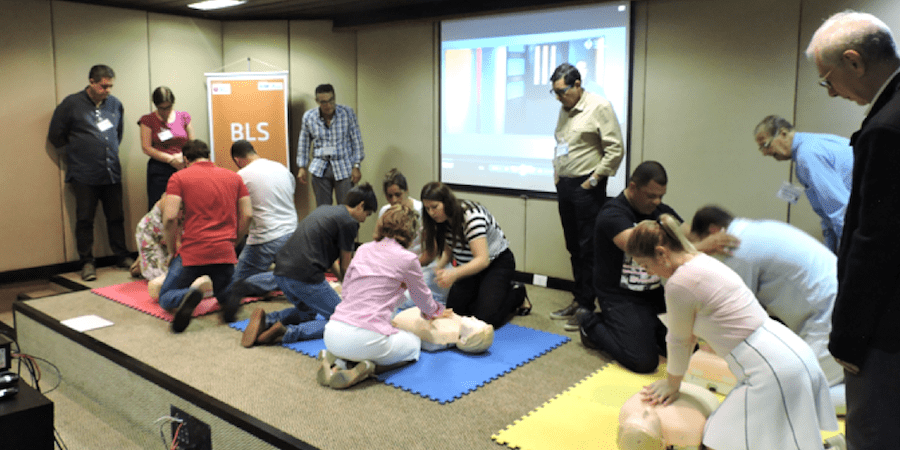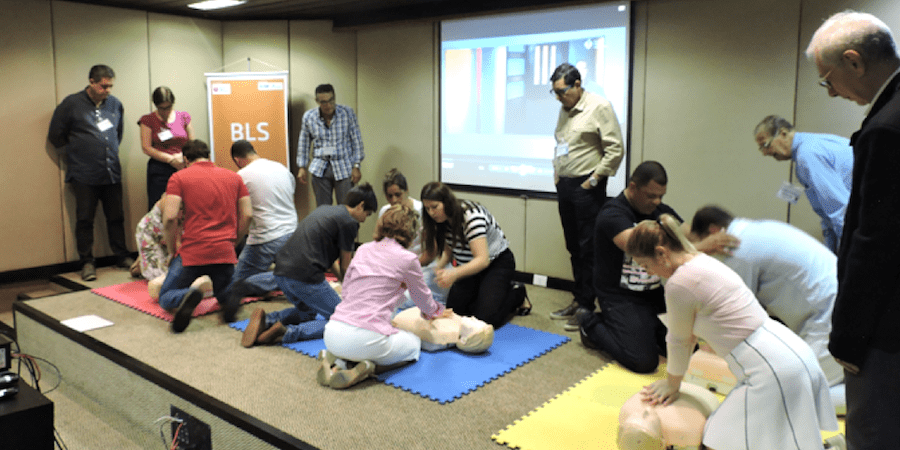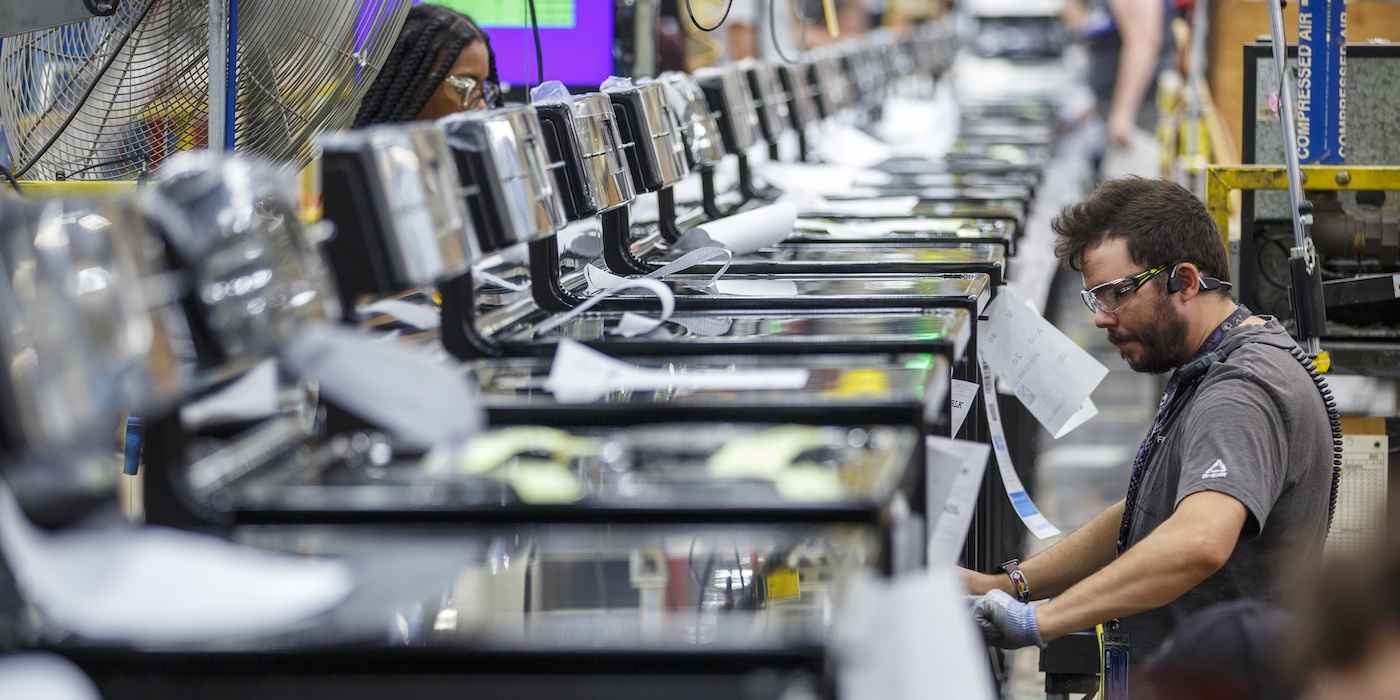
Lean thinking is perfectly compatible with digitalization
FEATURE – Day after day, groundbreaking technological advances are dramatically changing industry. It is clear that we are now experiencing a new industrial revolution, but what’s the role of lean thinking in this Digital Age?
Words: Ayperi Okur, chief researcher, Lean Institute Turkey
Industry is changing fast. We are entering a new era in industrial production, characterized by digital integration. One by one, developed countries are waking up to this revolutionary development, as demonstrated by the growing relevance of movements like “Industry 4.0” (which originated in Germany and is now spreading to markets as far as Korea and China) and by government initiatives, such as last year’s founding of the Digital Manufacturing and Design Innovation Institute in the United States.
This revolution is turning factories into “smart factories” characterized by:
- The omnipresence of digital devices and computers in production, which minimizes human intervention;
- Real-time connection with global demand and supply;
- The real-time and high-speed gathering, analysis, and sharing of data;
- And, last but not least, the intertwining of the virtual and real worlds.
Over the past three decades, lean has established itself as a superior approach to management, and it is becoming increasingly clear that the methodology also represents the best alternative to navigate the new, digitally-integrated industrial landscape we are quickly finding ourselves in. In fact, I’ll go as far as saying that lean principles are best implemented in such a system.
DIGITAL INDUSTRIAL PRODUCTION
Digital technologies are becoming an increasingly important feature of industrial production: smart software, unconventional materials (for example, nanoproduced ones), robotics that gain more dexterity with each day, 3D printers, Internet of Things (IoT) and so on. With all these technologies, the cost of producing an ever wider spectrum of products in much smaller lots, or even of customizing them to each and every customer’s unique requirements, falls rapidly and production gains incredible flexibility.
In the Digital Age, a laptop computer and a passion for innovation and producing smart products is often all you need to start up a new business. Compared to this, the gigantic investment in capital Ford had to make to build its River Rouge plant (just to mention a well-known chapter of industrial history) is almost mind-boggling. Digital production is the new(est) industrial revolution and, like all revolutions, it will have a disruptive impact on society.
The factories of tomorrow will be dramatically different from the factories we are used to. They will see machines made smart by digital minicomputers (like Radio Frequency Identification Devices, sensors and actuators) collect data, share them with each other and complete production collectively with no need for human intervention. Under this new system, most human work will not be conducted in the production area, but in offices, where designers, engineers, IT experts, logistics experts, marketing teams and other professionals will be located. Shop floor workers will be multi-skilled and will be able to communicate with smart machines using tablets (they will be able, for example, to send machines each day’s production plan). It is expected that these changes will be realized in several countries by 2025. That’s when the revolution will start to truly unfold.
No discussion on the technological advances we are experiencing would be complete without mentioning Cloud computing. As machines become “smarter” thanks to IoT technology and collect larger and larger amounts of data, traditional database infrastructure becomes obsolete and unable to store and analyze all the information. The Cloud seems to be perfectly compatible with the changes the Digital Age is bringing, and being either free or very affordable it represents a great opportunity for small- and medium-sized organizations.
The Digital Age will also result in a process of decentralization, which we can already observe today: in particular, the incredible flexibility offered by 3D printers will cause production to move wherever the customers are (imagine if a dealership could manufacture the spare parts for a car instead of having to order them from the manufacturer).
This is not the only advantage of 3D printers. The production process (which sees the product manufactured in layers, from the bottom to the top) is such that there is no waste or work-in-progress involved. With 3D printers production speed is immensely higher and economies of scale change dramatically (the cost of production doens’t change no matter the volume).
The technology we see today is something we couldn’t have imagined until just a few years ago. The pace of change is unbelievable: it is forecast that by the year 2020, 6.5 billion people and 18 billion objects will be connected to Internet of Things-based networks.
Needless to say, digitalization is also radically changing the way organizations compete with one another. From the point of the view of the customer (the only one that really matters, I should say) the technological advances and market changes of the Digital Age bring great transparency (you can now compare the price of thousands of products, study their quality and read about their functionality just by tapping on your phone). For companies, they create a need and an opportunity to innovate in order to offer better products at lowest prices.
Organizations keeping up with the pace of change will pile up the profits as the costs associated with commercial transactions, labor, and analysis and evaluation of Big Data decrease and as their workforce changes (from workers to programmers).
THE KEYS TO SUCCESS IN A DIGITAL TRANSFORMATION
These are all promising developments, but what should an enterprise do to be successful in its digital journey? It all comes down to this, after all. A digital transformation challenges every function and business unit in an enterprise, and requires new skills and investments. A 2004 article by Tunde Olanrewaju, Kate Smaje, and Paul Willmott (The seven traits of effective digital enterprises, McKinsey Quarterly) indicates that there are seven points that an enterprise should pay attention to in order to be successful in digitalization. Let's have a look:
- Being enthusiastic and eager beyond reasonable. Not to be reasonable is seen as an approach that can shake up your organization. If your targets do not make the majority of the employees nervous, maybe you are not aiming high enough.
- Buying companies that are successful in the digital arena.
- Carving a space for the digital business unit of a company to operate autonomously.
- Questioning everything and supporting all challenging initiatives. The leaders of companies with significant market share should challenge the status quo rather than accepting it. Why? Because they might, at any moment, come face to face with a new company from Silicon Valley that comes up with new ideas and products that might destroy their business. And don't forget to incorporate new and promising companies in your business group.
- Being very fast and always acting based on data. Fast decision-making is the foundation of a dynamic digital environment. Twelve-month time-to-market cycles are now history. Organizations, instead, should adapt to continuous delivery and continuous improvement cycles, employ lean product development principles and techniques in their firms, and support Big Data analysis via Cloud computing in the name of increasing the speed of their innovative processes.
- Acting on the basis of creating value. A digital transformation is much more than finding new revenue streams. The basis of a digital transformation is creating value by lowering the costs of doing business and eliminating waste that leads to high costs. In a company, teams should focus on those digital investments that create the most value.
- Being obsessive about the customer. A healthy obsession with improving customer satisfaction is one of the fundamentals of any digital transformation. This requires a radical change in mindset. Take online retail giant Zappos, for example: it sends customer to its competitors' websites whenever a product is no longer available in its own store.
DIGITAL INDUSTRIAL PRODUCTION AND LEAN
Let's go back to Germany's Industry 4.0 aspirations for a moment. They aim to integrate modern IT with manufacturing and supply chain operations (the so-called cyber-physical production) and to establish "smart factories". At this point, a question might come to mind: would the computerization of manufacturing make lean unneccessary? The above analysis seems to reveal the opposite: that digital production and lean thinking are in fact completely compatible.
Industry 4.0 creates an environment in which customer demand is much better understood and data are shared in real-time through complex supply chains and networks. Smart factories manufacture products much faster and with much less waste (close to zero, actually), and new technology allows for the fast manufacture of highly customized products in one-piece flow.
However, I must stress that radical changes in production would also transform (at least partially) the way we implement lean thinking. Physical kanban cards, white boards and andon cords, for instance, will be used less and less. Then again, Toyota never considered these tools and practices to be goals in themselves. Instead, it sees them as technical solutions, developed at one point in time to minimize waste in processes. There is no reason why old tools shouldn't be abandoned if new, better ones are introduced by digitalization.
The current literature seems to also believe that lean management is the most suitable strategy for a digital transformation. The GAFA group (Google, Apple, Facebook, Amazon), for example, or Web giants like Twitter, LinkedIn or WordPress, or even Pixar, have more or less openly declared that the digital transformation in production is only possible with lean principles in place. In his autobiography, Pixar CEO Ed Catmull wrote: "Toyota has been an incomparable inspiration fountain for me in the shaping of my leadership formation that I developed to advance creativity."
THE FUTURE OF LEAN IN THE DIGITAL AGE
Today's innovations offer an incredible opportunity to build on a company's lean efforts by enabling massive cost savings and eliminating work and processes that add no value. When I say digitalization and lean are compatible, I think of things like 3D printers, for instance: they use materials just-in-time with no waste and the whole production cycle time is made of value-adding operations only. What's leaner than that? Internet of Things is another example: the gathering of multi-dimensional data (from temperature to movement, acceleration to force) via embedded RFID devices or sensors, the sharing of these data among machines, and their analysis by Cloud computing lead to machines operating in perfect harmony with one another without the need for any human intervention. This is revolutionary for lean, and it won't be long before value stream mapping becomes automatic through the use of IoT and is updated in real time.
While the opportunities for lean in the digital world are indeed great, I believe that it is also necessary for the methodology to review some of its most importants ideas in the light of this revolutionary developments. Think of Apps, for example. Whoever owns a smartphone uses them and finds them to be of great value. They very often free of charge, however, and it is possible that this makes the cost-value analysis inherent to lean thinking lose some of its meaning. How can lean explain the reality of a zero cost-high value situation, when its core belief is based on the idea of understanding how to maximize value while decreasing costs? If the cost is zero, where does lean fit into the picture?
It is my opinion that under such circumstances lean's definition of value should be re-addressed and it should become very clear how the methodology internalizes this concept given the conditions of the new digital world. In fact, the emergence of Apps has somehow put under scrutiny the idea of "waste" too. We may not use many of the Apps on our smartphones and tablets, but when their cost is zero can we really talk about "waste"?
I think that answering these questions is critical if lean is to stay relevant and continue to contribute its superior principles and ideas to organizations around the world. Our future can be filled with opportunities if lean thinking and digitalization go hand in hand.
THE AUTHOR

Read more


FEATURE – A group of Italian researchers and professionals partnered with a NGO to prove how lean thinking can pave the way for the competitiveness and sustainable development of SMEs in Myanmar. Is this a new model for the developing world?


INTERVIEW - To really change, an organization must use lean management as a strategic asset rather than just a set of tools. In this interview, Art Byrne talks about rewarding people and the process of transforming companies.



INTERVIEW – A cardiologist from a hospital in Salvador de Bahia explains how his department was completely transformed following the introduction of a dedicated pathway for heart patients.


INTERVIEW – Learn how Lean Thinking helped GE Appliances improve performance, develop people, and build a resilient, customer-focused, and learning-driven organization.

